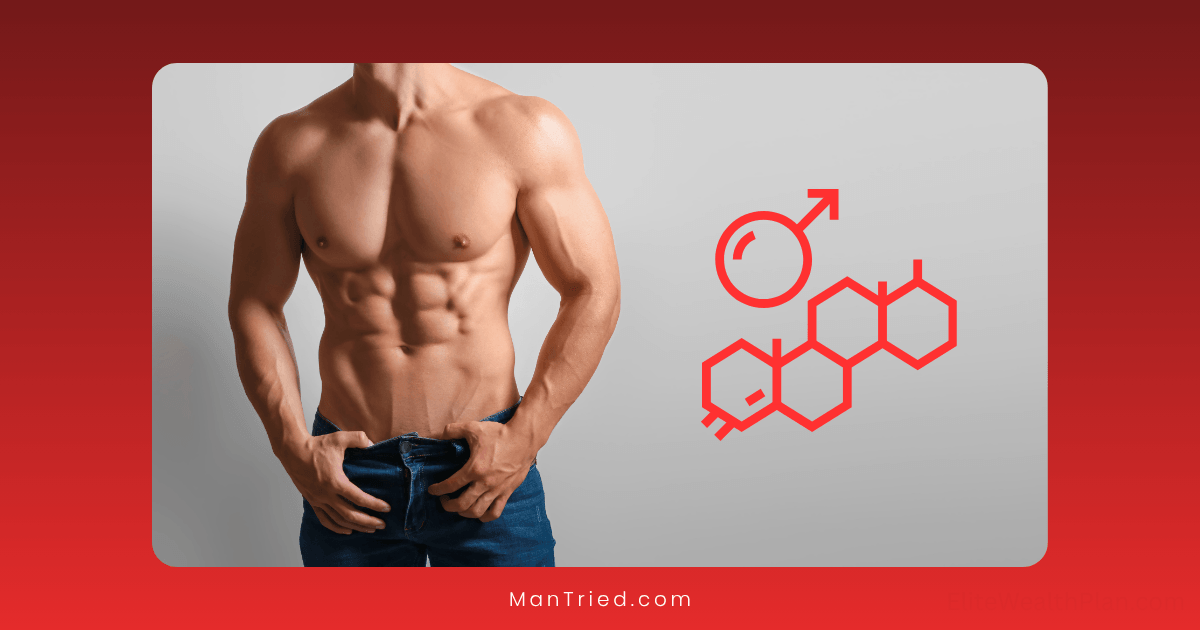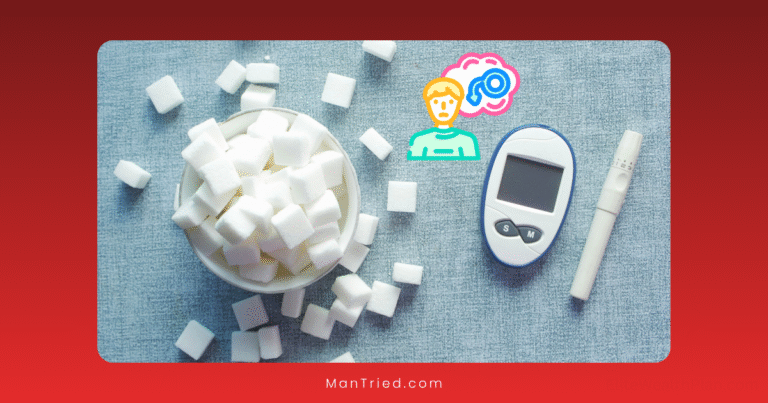Age-Related Testosterone Decline: What’s Normal vs. Treatable

“My doctor says my testosterone is low, but he’s not sure if I need treatment.”
This statement reflects the confusion many men experience when confronting declining testosterone levels. As men age, testosterone naturally decreases—but when does this normal aging process cross the line into a treatable medical condition?
The distinction between normal age-related decline and true hypogonadism (clinically low testosterone) isn’t always clear-cut. This comprehensive guide will help you understand what’s normal, what’s not, and when treatment might be appropriate.
The Natural Trajectory of Testosterone Throughout Life
Testosterone, the primary male sex hormone, follows a predictable pattern throughout a man’s life:
- Prenatal development and infancy: Testosterone surges during fetal development and shortly after birth
- Childhood: Levels remain low until puberty
- Puberty and adolescence: Dramatic increases (up to 30-fold)
- Early adulthood: Peak levels typically occur around age 20-30
- Middle age onward: Gradual decline begins
According to research published in the National Library of Medicine, testosterone levels decrease by approximately 100 ng/dL every 10 years after age 30-40. The European Male Aging Study found more specific numbers: a decline of about 0.4% per year in total testosterone and 1.3% per year in free testosterone (the biologically active form) in men aged 40 to 79.
This decline is so predictable that some doctors have nicknamed it “andropause” or “male menopause,” though these terms are misleading since the decrease is gradual rather than the relatively rapid hormonal shift women experience during menopause.
What’s “Normal” Testosterone by Age?
The generally accepted normal range for total testosterone in adult men is approximately 300-1000 ng/dL, but this broad range doesn’t account for age-related changes. More nuanced age-specific ranges might look like:
- 20-30 years: 600-900 ng/dL
- 31-40 years: 500-850 ng/dL
- 41-50 years: 450-800 ng/dL
- 51-60 years: 400-750 ng/dL
- 61-70 years: 350-700 ng/dL
- 71+ years: 300-650 ng/dL
However, these ranges are approximations, and individual variation is significant. What’s most important isn’t just the number, but how that number relates to symptoms.
How Common Is Low Testosterone in Aging Men?
The prevalence of low testosterone increases dramatically with age:
- According to MedPage Today, total testosterone levels below 325 ng/dL are found in:
- 20% of men in their 60s
- 30% of men in their 70s
- 50% of men in their 80s
- The Baltimore Longitudinal Study of Aging found that 19% of men over 60 years had low testosterone levels.
- The Cleveland Clinic reports that approximately 8% of men aged 50 to 79 have testosterone levels below normal range.
These statistics highlight an important point: while low testosterone becomes more common with age, it’s not universal or inevitable. Many men maintain adequate testosterone levels well into their senior years.
Normal Aging vs. Hypogonadism: The Key Differences
The critical question for many men is: “Do I have normal age-related testosterone decline, or do I have a treatable condition called hypogonadism?”
Defining Hypogonadism
Hypogonadism is a clinical condition characterized by:
- Low testosterone levels: Generally defined as morning total testosterone below 300 ng/dL on at least two separate occasions.
- Specific symptoms: Not just vague complaints, but clear symptoms known to be associated with testosterone deficiency.
- No other obvious cause: Symptoms cannot be better explained by another medical condition, medication effect, or lifestyle factor.
Types of Hypogonadism in Aging Men
- Primary hypogonadism: The testicles themselves don’t produce enough testosterone, despite proper signals from the brain.
- Secondary hypogonadism: The pituitary gland or hypothalamus doesn’t properly signal the testicles to produce testosterone.
- Late-onset hypogonadism (LOH): A combination of symptoms and low testosterone specifically related to aging. This is the most controversial category, as it can be difficult to distinguish from normal aging.
Symptoms: What’s Attributable to Low Testosterone?
Not all symptoms experienced during aging are due to declining testosterone. Here’s how to distinguish:
Strongly Associated with Low Testosterone
These symptoms have been consistently linked to low testosterone in research studies:
- Reduced sexual desire (libido): Not just occasional disinterest, but a persistent decrease
- Fewer spontaneous erections: Particularly morning erections
- Erectile dysfunction: Especially when not responsive to PDE5 inhibitors like Viagra
- Decreased energy/fatigue: Not explained by sleep issues or other conditions
- Loss of body hair: Particularly facial and pubic hair
- Hot flashes/sweats: Similar to those experienced by women in menopause
- Decreased bone mineral density: Leading to osteopenia or osteoporosis
- Reduced muscle mass: Despite maintaining physical activity
Possibly Related to Low Testosterone
These symptoms may be related to low testosterone but have multiple potential causes:
- Depressed mood: While linked to testosterone, depression has many other causes
- Poor concentration/memory: Cognitive changes can have numerous origins
- Increased body fat: Particularly abdominal fat
- Mild anemia: Low testosterone can reduce red blood cell production
- Decreased motivation: Often difficult to distinguish from depression
Probably Not Related to Low Testosterone
These symptoms are often attributed to low testosterone but likely have other causes:
- Joint pain: More likely related to arthritis or other musculoskeletal conditions
- Headaches: Rarely associated with hormonal changes in men
- Chronic fatigue without other symptoms: More likely due to other medical conditions
- Sleep disturbances without other symptoms: Usually have other causes
Diagnostic Approach: When to Test and How to Interpret Results
If you’re experiencing symptoms potentially related to low testosterone, here’s the recommended diagnostic approach:
When to Consider Testing
Testing for testosterone levels may be appropriate if you have:
- Multiple symptoms strongly associated with low testosterone
- Risk factors for hypogonadism (obesity, diabetes, pituitary disorders, testicular injury)
- Symptoms that significantly impact quality of life
- No other obvious explanation for symptoms
Proper Testing Protocol
According to the Endocrine Society, testosterone testing should follow these guidelines:
- Morning testing: Testosterone levels are highest in the morning (before 10 AM), so samples should be collected then.
- Repeated measurements: A single low reading is insufficient for diagnosis. At least two morning measurements showing low levels are required.
- Comprehensive panel: Beyond total testosterone, testing should include:
- Free or bioavailable testosterone
- Sex hormone-binding globulin (SHBG)
- Luteinizing hormone (LH) and follicle-stimulating hormone (FSH)
- Complete blood count
- Metabolic panel
- Prostate-specific antigen (PSA) in men over 40
- Additional testing: If initial results suggest hypogonadism, further testing may be needed to determine the cause, such as pituitary imaging.
Interpreting Results
The interpretation of testosterone results requires nuance:
- Total testosterone <250 ng/dL: Almost always indicates hypogonadism if accompanied by symptoms.
- Total testosterone 250-350 ng/dL: The “gray zone” where clinical judgment becomes crucial. Treatment decisions should be based on:
- Severity of symptoms
- Free testosterone levels (which may be low even when total testosterone is borderline)
- Presence of risk factors
- Response to trial treatments
- Total testosterone >350 ng/dL: Symptoms are likely due to causes other than testosterone deficiency.
Treatment Considerations: When Is Testosterone Replacement Appropriate?
The decision to treat with testosterone replacement therapy (TRT) should never be made lightly. Here are the key considerations:
Clear Indications for Treatment
According to current guidelines, TRT may be appropriate when:
- Confirmed low testosterone: Multiple morning tests show levels below 300 ng/dL.
- Presence of specific symptoms: Particularly sexual symptoms, fatigue, and loss of muscle mass.
- Symptoms impact quality of life: The severity warrants intervention.
- No contraindications: Absence of conditions that would make TRT unsafe.
Contraindications to Testosterone Therapy
TRT should generally be avoided in men with:
- Prostate cancer or high risk of prostate cancer
- Breast cancer
- Severe lower urinary tract symptoms
- Untreated sleep apnea
- Heart failure
- Elevated hematocrit (>54%)
- Desire for fertility in the near future
Treatment Goals and Expectations
Realistic expectations for TRT include:
- Symptom improvement: Sexual function, energy, and mood typically improve within 3-6 months.
- Target testosterone levels: For older men, the goal is typically 500-800 ng/dL (not maximizing to the upper limit of normal).
- Ongoing monitoring: Regular blood tests and clinical evaluations are essential.
- Potential long-term commitment: Once started, TRT may need to be continued indefinitely.
Treatment Options
Several formulations of testosterone replacement are available:
- Topical gels and solutions: Applied daily to the skin, providing steady hormone levels
- Injections: Administered every 1-2 weeks (cypionate, enanthate) or 10-14 weeks (undecanoate)
- Pellets: Implanted under the skin, lasting 3-6 months
- Patches: Applied daily to the skin
- Nasal gel: Applied inside the nostrils multiple times daily
- Buccal tablets: Adhered to the gums twice daily
Each option has distinct advantages and disadvantages related to convenience, cost, and side effect profile.
Alternative Approaches
For men with borderline low testosterone or contraindications to TRT, alternatives include:
- Clomiphene citrate: Stimulates the body’s own testosterone production
- Human chorionic gonadotropin (hCG): Mimics LH to stimulate testicular testosterone production
- Lifestyle modifications: Weight loss, improved sleep, resistance training, and stress reduction can naturally boost testosterone
The Controversy: Overtreatment Concerns
The treatment of age-related testosterone decline remains controversial in medical circles. Research from the National Library of Medicine indicates that:
- Up to 25% of men on testosterone therapy have not had their testosterone levels checked before starting treatment.
- Up to 33% of men on testosterone replacement therapy for hypogonadism do not meet the diagnostic criteria for the disorder.
These statistics highlight concerns about potential overtreatment, particularly in men with vague symptoms and borderline testosterone levels.
Making an Informed Decision
If you’re considering whether your age-related testosterone decline warrants treatment, consider these steps:
- Get comprehensive testing: Ensure proper morning testing on multiple occasions.
- Rule out other causes: Many symptoms attributed to low testosterone have other causes that should be addressed first.
- Consider your overall health: Factors like obesity, poor sleep, and chronic stress can lower testosterone and should be addressed before considering TRT.
- Weigh benefits against risks: TRT can significantly improve quality of life for men with true hypogonadism but carries potential risks that must be considered.
- Seek expert opinion: Consult with an endocrinologist or urologist who specializes in male hormonal health, not just clinics that primarily market testosterone therapy.
The Bottom Line
Age-related testosterone decline is normal, but its impact varies significantly between individuals. While some men experience minimal effects, others develop symptomatic hypogonadism that may benefit from treatment.
The key is distinguishing between normal aging and a treatable hormone deficiency through proper testing, careful symptom evaluation, and consultation with knowledgeable healthcare providers.
Remember that testosterone is just one factor in healthy aging. A holistic approach—including regular exercise, proper nutrition, stress management, and adequate sleep—remains the foundation of well-being as you age, regardless of your testosterone status.
Have you experienced symptoms of low testosterone? What helped you decide whether to pursue treatment? Share your experiences in the comments below to help others navigating similar decisions.






